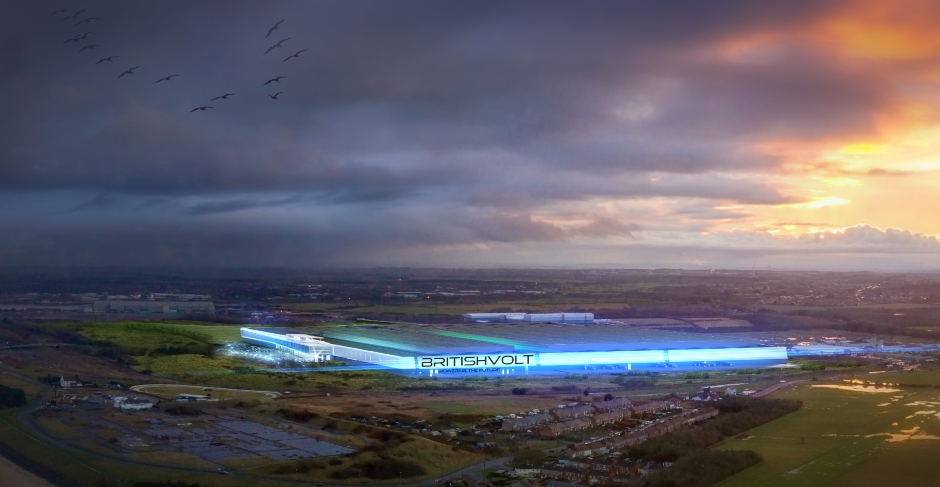The transition to electrification has generated a rapidly increasing demand for battery cells and packs powering electric vehicles (EVs). According to the Bloomberg NEF 2020 EV Outlook Report, nearly 1.8TWh will be needed globally by 2030 to meet EV battery requirements. Within the UK, the Faraday Institution has estimated that by 2040 there will be demand for 130GWh in battery cell capacity, equivalent to eight Gigafactories, signalling a gap between supply and demand which will have to be met either with expensive imports or by building new facilities.
Powering up a British battery boom
Geographically, the majority of battery production (roughly 70 per cent) currently is in Asia, given its accessibility to abundant natural resources, as well as government-driven support for high-volume manufacturing and local demand for electric vehicles. This is likely to stay the case in the future and therefore presents a major supply chain security concern for automotive companies based in Europe and the US, both of which have to create incentives for automotive OEMs to stay or risk losing their automotive industries altogether. Europe remains an attractive opportunity due to its world-leading research centres, increasing consumer demand for electric vehicles, and availability of natural resources and skilled staff. However, it is hampered by lack of standardised equipment and high production costs.
Trends are already emerging with automotive OEMs partnering with cell manufacturers and entering into joint ventures to secure battery cell supply. Staying close to cell manufacturers allows automotive OEMs to eliminate supply chain risks, such as concerns about transporting dangerous goods and longevity of supply, and use the opportunity to co-develop battery cells, packs and EVs. It is therefore imperative for the UK to attract and develop high volume cell manufacturing capability to decrease the temptation for UK automotive OEMs to seek opportunities elsewhere.
At the moment, the Nissan plant in Sunderland is the only UK facility manufacturing lithium-ion cells at scale (2-3GWh). AMTE Power and BritishVolt have both announced plans for UK-based Gigafactories, which will help supply local products to the UK automotive sector.

Nonetheless, further investment into the automotive industry is crucial. Investment into the UK automotive sector has been plummeting since 2013 and in 2018 inwards investment amounted to a mere £0.59bn. Government backed bodies such as the Advanced Propulsion Centre and the Faraday Institution are continuously working to accelerate battery technology by promoting and catalysing innovation and collaboration between manufacturers, technology providers, automotive OEMs, research organisations, and academics, through various funding opportunities.
It is critical that the government continues to back the work of these organisations and that R&D funding is channelled into the automotive industry. Action to ramp up capacity needs to be taken within the coming year. Typically it takes a Gigafactory five years to become fully operational from initial conception, whereas demand for cell manufacturing is expected to surge in the next four to five years - a clear indication that the UK is already behind. In the most detrimental scenario, UK based automotive OEMs would seek to leave the country. This would adversely affect the entire UK economy, not just the automotive sector, as it accounts for 14.4 per cent (worth £44bn) of total UK exports of goods.
The UK has a wealth of knowledge and experience in battery chemistry and cell design which must be leveraged to provide competitive next generation products. The typical cell development period of 10 years can be reduced by focusing on integration within existing and expected future manufacturing processes. This will help reduce development period from lab to market and ensure that existing production equipment is utilised where possible to minimise capital costs and early investment. Utilising scale up expertise and facilities will be critical in this activity.
The UK must also tackle other challenges including lack of skilled technicians and availability of critical raw materials, but given the clear need from the automotive industry, this should be seen as an opportunity for progression. With close collaboration between investors, customers, UK government, technology developers and suppliers, these challenges can be overcome to provide competitively priced, high quality, high performance, even potentially world leading, battery cells.
Robin Foster, Battery Technology Solution Lead, HSSMI











Water Sector Talent Exodus Could Cripple The Sector
Well let´s do a little experiment. My last (10.4.25) half-yearly water/waste water bill from Severn Trent was £98.29. How much does not-for-profit Dŵr...